Hopping from rock to rock, our laden backpacks jostling uncomfortably, the trail finally disappeared in a backwater channel of Jasper National Park’s Whirlpool River.
We gave up trying to keep our feet dry and simply waded in.
Suddenly, somewhere high above us, we heard a plane. As it grew louder, we realized we weren’t hearing the roar of a jet engine but the rumbling of boulders, tumbling through water.
We were approaching Simon Creek, in the western part of Jasper National Park (JNP) where, we knew from prior research, the bridge was washed out.
Icy blue water frothed past what was once a broad stanchion, now just a rectangular pile of cobble wrapped with industrial-strength chicken wire, squatting one third of the way across the river. A second stanchion had been washed away, and the potential for wire netting to be flapping underwater, waiting to catch unwary human or horse legs, was terrifying. The on-ramp was the only bit of bridge left. Five feet wide and built of skookum rough cut lumber atop thick wooden beams, its heft was a testament to the force required to break up the bridge. It also marked our furthest point on this hike. Beyond the remnants of the bridge, a 20-metre-wide white-capped torrent, its growling audible 500 metres down trail, deterred any thoughts of attempting a crossing.
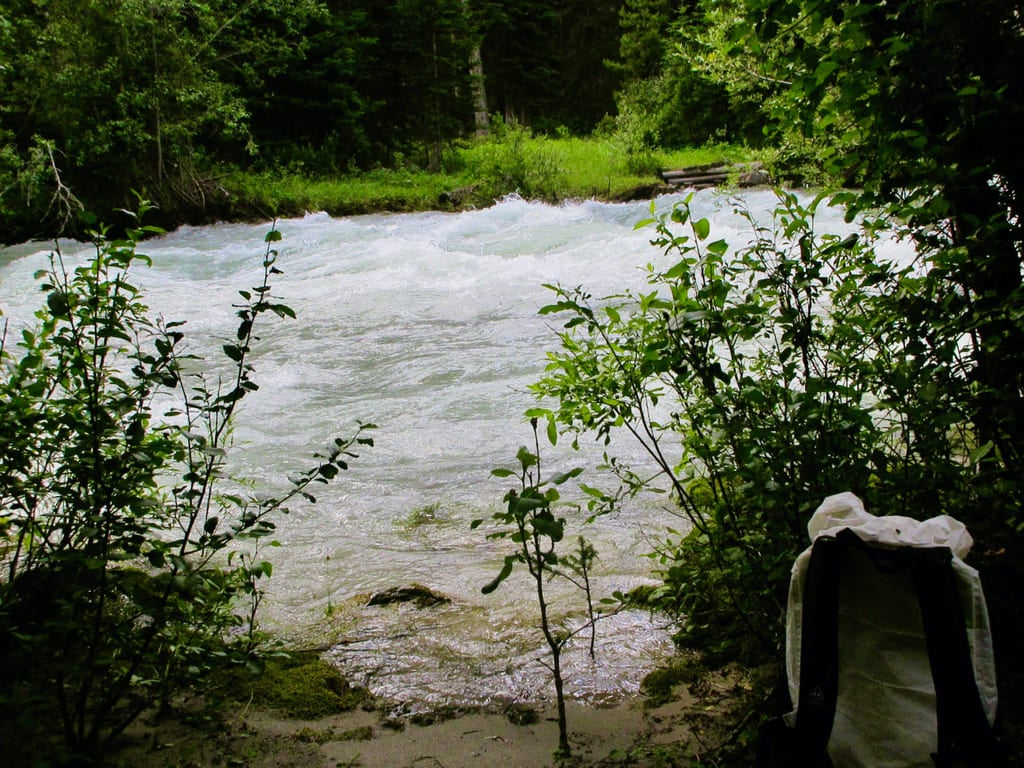
Bridge under troubled waters
It was the summer of 2021. I was on the trail to Athabasca Pass—a national historic site located on the continental divide, 49 kilometres along JNP’s Whirlpool River Valley. The trail follows the traditional route of early fur traders crossing the Rocky Mountains, but the washed out bridge at Simon Creek and general lack of trail maintenance has made Athabasca Pass extremely difficult, if not impossible, to access. While I would have loved to have visited historic Committee’s Punchbowl and, like the fur traders 200 years ago, made a toast at the site where the water flows to both the Arctic and Pacific oceans, the powerful waves of Simon Creek abruptly scrubbed that idea from our minds. The bridge hasn’t been replaced since it was swept away in 2016—a spiralling state of decay that embodies the decline of Jasper National Park’s backcountry trails.

There are three routes in Jasper National Park which provide seven to 10 days of continuous wilderness travel: the Athabasca Pass Trail, the North Boundary Trail and the South Boundary Trail. All three are missing key bridges.
Sink or swim
Five bridges are washed out along JNPs 180-kilometre-long North Boundary Trail, a once-proud route traversing the remote backcountry which divides JNP with Wilmore Wilderness and B.C.’s Mount Robson Provincial Park. These days, to complete the route, horses and hikers would have to swim across the outlet of six-kilometre-long Twintree Lake.
“Many creeks and rivers are not bridged. Fords can be dangerous or impassable. Travel is not recommended during times of high water,” Jasper National Park’s backcountry guide warns.
On the park’s 120-kilometre-long South Boundary Trail, the Brazeau River bridge is washed out. Horse party accounts of that crossing describe animals and riders alike risking hypothermia by swimming the outlet of Brazeau Lake.
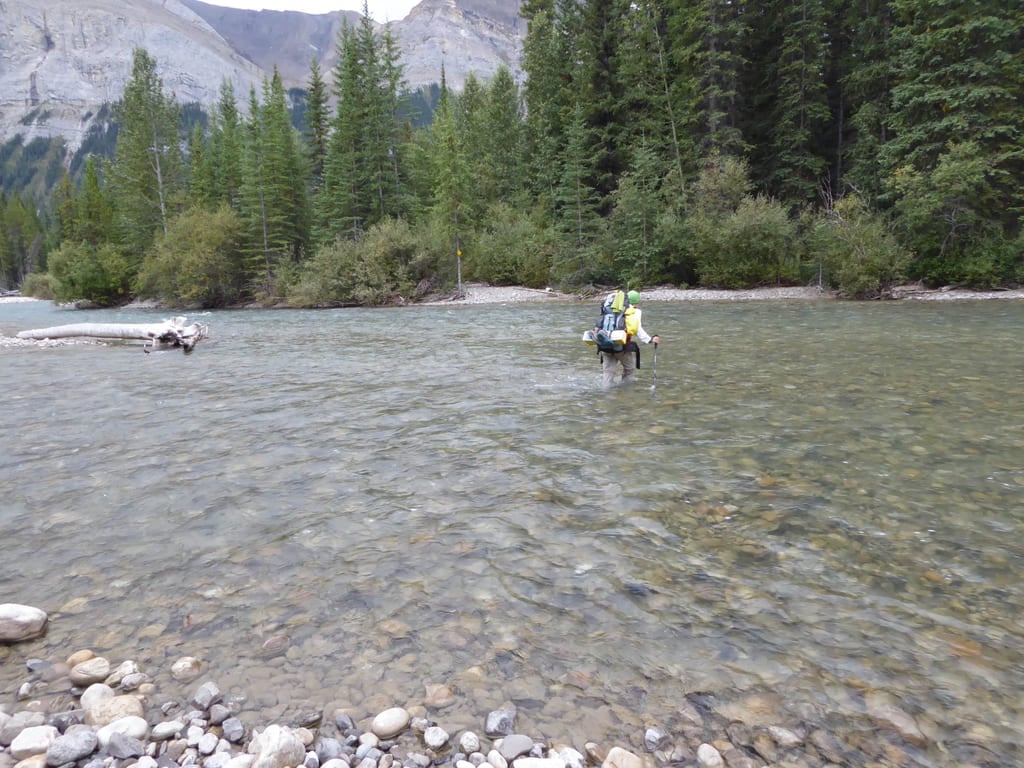
Yet Jasper National Park authorities have no short-term plans to fix these problems.
“There’s no budget in the next three years to replace those bridges,” JNP Superintendent Allan Fehr told an online public forum in April 2022.
Hikers and horseback riders argue that underfunding backcountry trails amounts to their de facto closure. Scott Meadows, a keen backcountry hiker and skier based in Edmonton, was recently stymied by poor trail conditions and washed out bridges.
“They don’t actually close the trails, they just take them off the maps and stop maintaining them,” Meadows said.

Parks Canada says the agency has to prioritize where the larger visitor interest is. Despite the appetite for multi-day treks from trail users like Meadows, for the most part, the larger visitor interest lies much closer to pavement.
“When there’s no visitor demand or extremely limited visitor demand, we need to make management choices appropriately,” said Dave Argument, JNP’s Resource Conservation Manager.
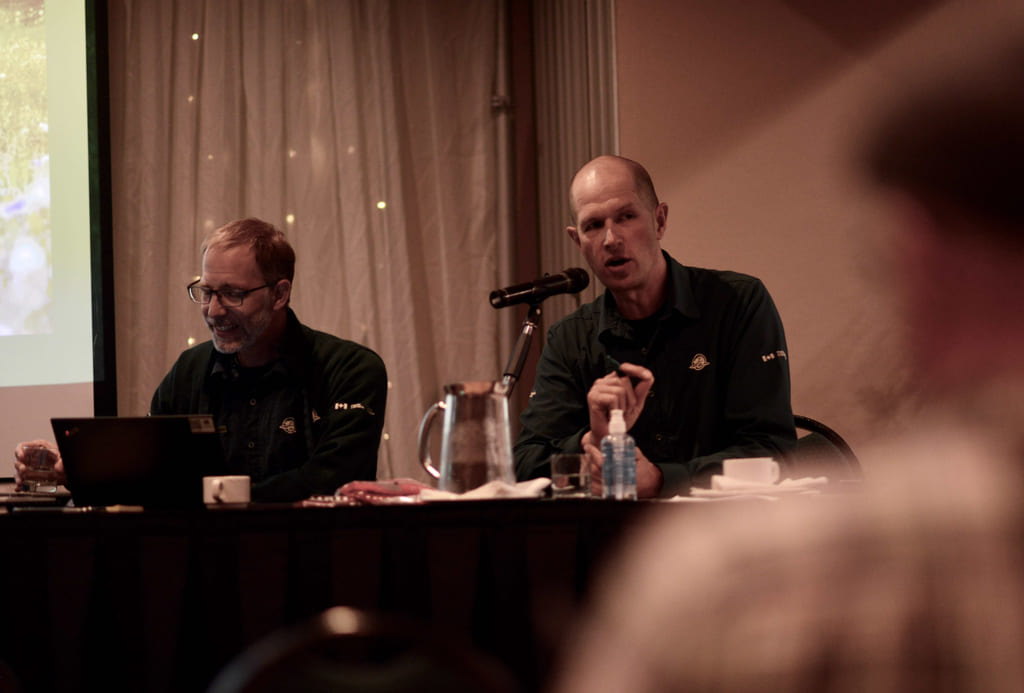
In that cost-benefit calculation, Meadows and other backcountry enthusiasts lose out.
But despite the lack of funding and attention to the historic route, a fortunate few still manage to reach Athabasca Pass. Park officials advise that Simon Creek may be crossed in September—during the hiking season’s lowest water levels. Unfortunately, the best weather for enjoying Canada’s Rocky Mountain parks spans mid-July to late August. September often brings snow. Knowing that, and to prepare for a possible trip later in the year, in July a friend and I biked and hiked the first 15 kilometres of the route that David Thompson first opened to fur traders in 1811.
Tied to the past
A well-built gravel road took us from swampy Moab Lake past a lovely campsite on the Whirlpool River. As we hiked the six-kilometres of forested trail to Simon Creek, the route became rougher and rougher. Eventually, the trail was merely a foot-deep rut, packed down as it has been by two centuries of human feet and horses’ hooves. Still, we strode along quickly, musing about First Nations hunters and gatherers, Métis voyageurs, European explorers and early outfitters who’d walked this path before us.
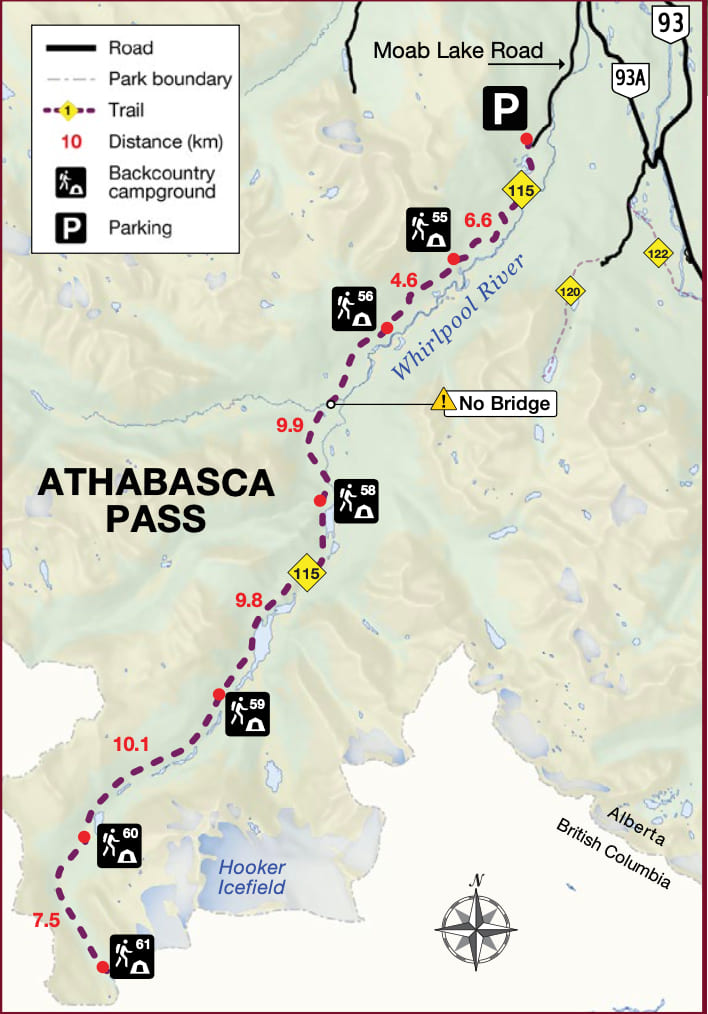
Soon we reached Tie Camp—a former logging camp where, from 1919 to 1927, railway ties were cut from trees and floated down the river for construction of the railroad. Traces of this century-old operation still exist. The collapsing walls of one log cabin and the corner of another are steps from the trail. The bow of a pointer boat once used to drive timber rests in a clearing of moss. And a wagon wheel leans against a makeshift pile of artifacts. Travelers-cum-curators have collected them from the surrounding forest, paying homage to the ghosts of the backcountry.
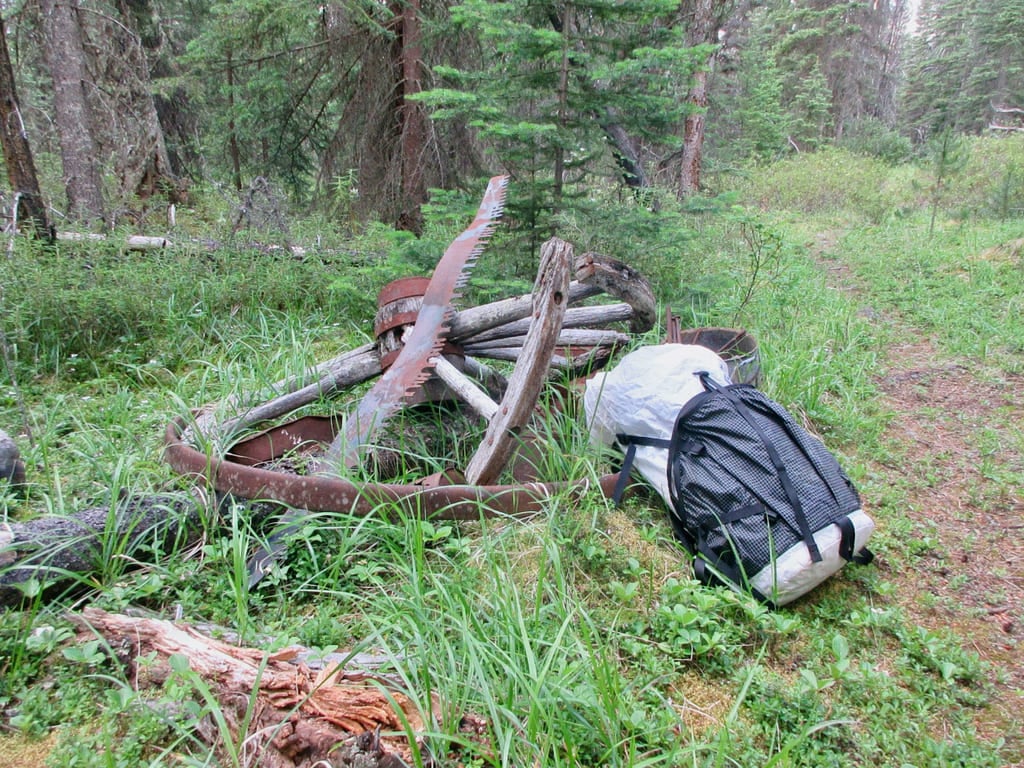
We had entered a lost world. After the bloodshed of World War One and before the Great Depression brought the world to its knees, men laboured here in leather boots, suspendered pants and weather-shielding hats. They cut down trees and shaped them into short rectangular ties for railways that would bind Canada together. In this isolated place, men had toiled in obscurity while doing important work that helped connect a vast land, yet there were no interpretive signs at the camp to tell these stories. For most hikers, Tie Camp’s history remains cloaked in mystery.
Perhaps the failure to signpost this site is symptomatic of JNPs priorities. But it’s places like Tie Camp and seeing, touching and feeling what those who have come before us have experienced which connects us to our collective history.
Unfortunately, for modern day Jasper National Park adventurers, making those tangible connections to the national historic site at Athabasca Pass is all but impossible.

Log jams
As I stared at the churning whitewater where a stout bridge used to span Simon Creek, I thought about how river crossings are the most dangerous part of any horse packing or hiking trip. Once, on a nine-day pack trip in Willmore Wilderness north of the Park, friends and I had to swim our horses across a river to get back to the trailhead. Six days of torrential rain in the mountains had changed a clear blue stream into a churning brown mass which threatened to sweep us into a log jam. As we dried our gear around a campfire that night, the water rose another eight inches. It would have been certain disaster if we’d had to cross it.
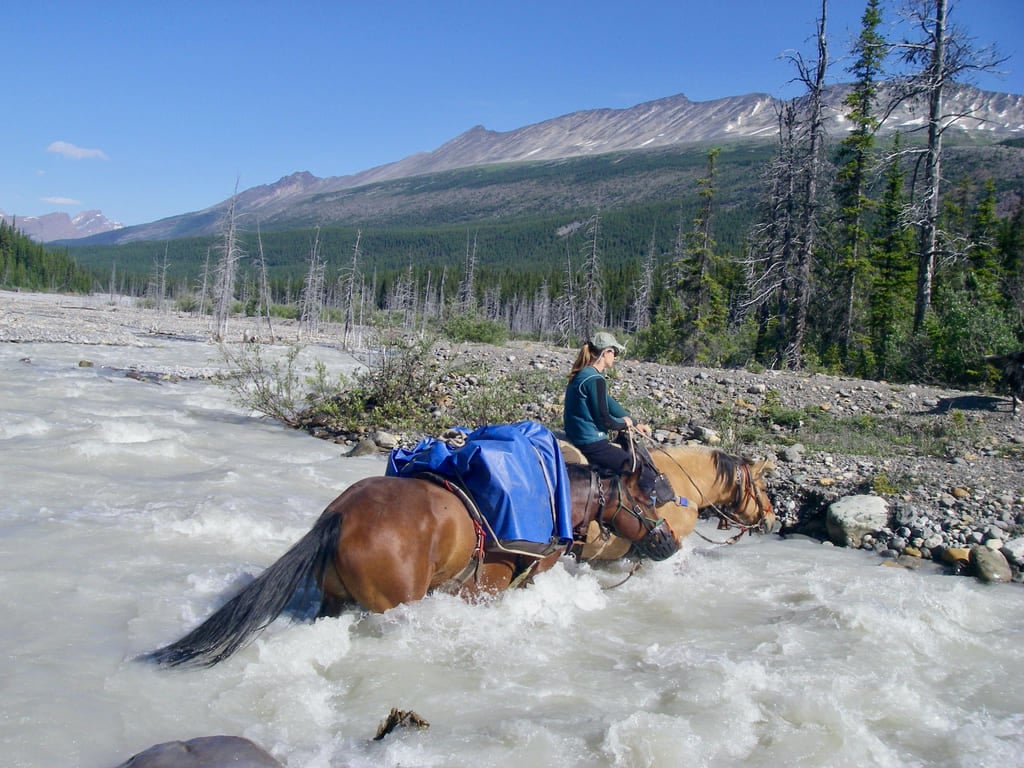
Even if Simon Creek drops to a crossable level in September and a hiker or horse party could make their way to the other historic camp sites along the Athabasca Pass Trail, there’s always a chance that rain in the headwaters would raise the creek again, forcing trail users to make a dangerous decision. Argument, JNP’s resource conservation manager, is all too familiar with that scenario—that’s exactly what happened to him on a staff horse pack trip in late September, 2019. On the way in the river was “reasonable,” he said, but after three days of rain, Simon Creek was nearly breaching its banks.
“It ended up being one of the sketchiest river crossings that I’ve ever done on a horse,” he recalled. “The horses weren’t quite afloat but it was pretty wild water.”
Argument knows there are a number of bridges in Jasper National Park that need attention, including at Simon Creek. But because of the engineering required to design a bridge which will do its job when the creek is in full flood, Argument says its prioritization is a difficult case to make.
“It’s a significant water crossing,” Argument said. “It’s a Class A bridge that … costs multiple hundreds of thousands of dollars.”
And it’s not just replacing assets which costs money the park doesn’t seem to have; a Parks Canada report notes more funding is needed to avoid “losing significant and irreplaceable examples of Canada’s cultural and built heritage.”
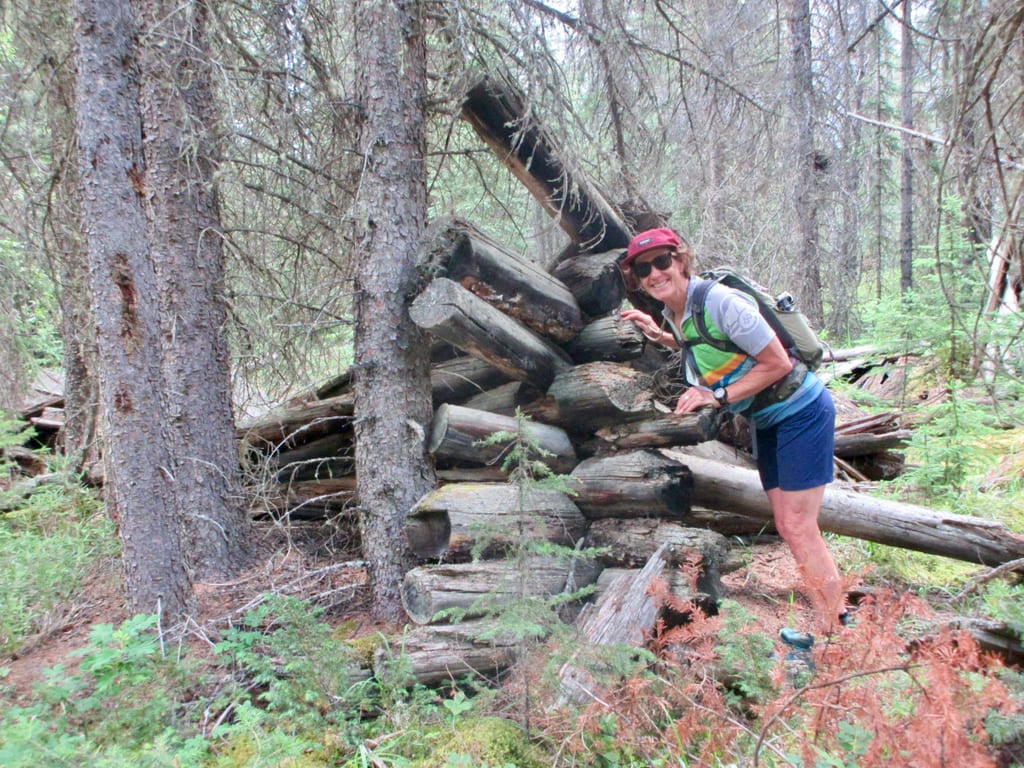
Front to back
Deteriorating backcountry trail conditions such as those we encountered are a long-standing issue in Jasper National Park. The remote nature of these routes tends to make conditions reports irregular and, therefore, inaccurate. Even JNP Trail Office staff who provide visitor information can be ill-informed. When I contacted the office prior to our trip, there was no word on shin-deep backchannels washing over the trail, the dozen or so downed trees we would have to crawl under and over, nor the rotten, rusty-nail-ridden boardwalk which no longer protected the sensitive wetland it spanned.
“It might be muddy,” is what I was advised.
Understandably, park funds are prioritized for areas with the highest use. That means front-country (non-wilderness) camping and short, car-accessible experiences. At first glance, the math is compelling. Jasper is the second most popular national park in Canada, and had more than 2.1 million visitors in 2021. Of those, 385,000 were front-country campers and only 18,500 were backcountry campers. That ratio of more than 20 front-country campers to each backcountry adventurer stacks the fiscal deck against wilderness trail maintenance.
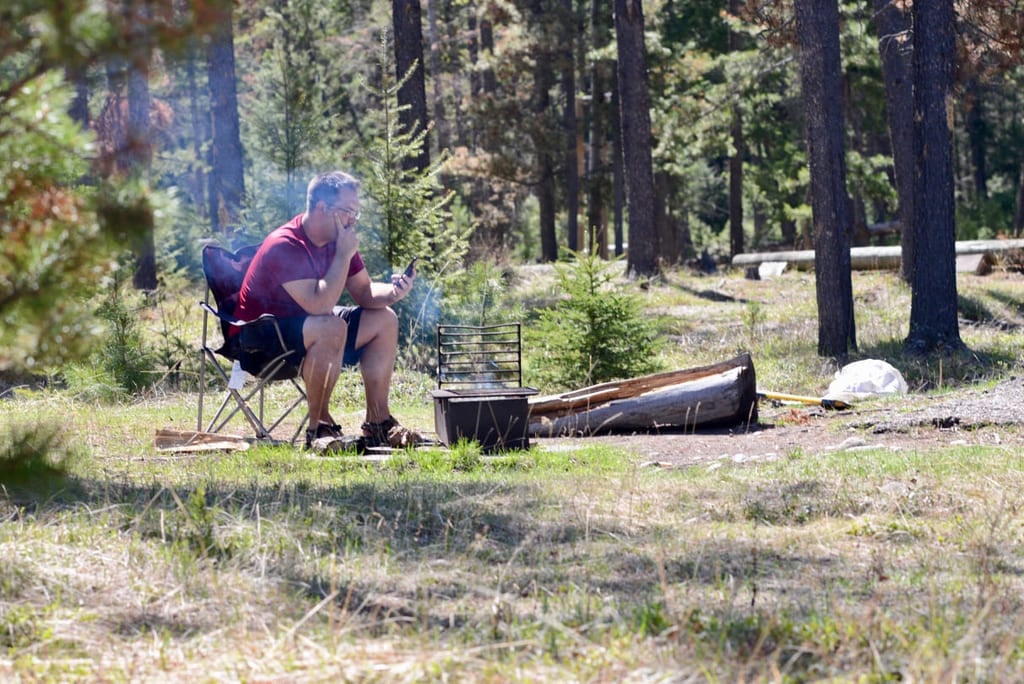
There’s also a chicken-and-egg dynamic at work: if trails are impassible then hikers and horseback riders can’t travel them. Certainly if they’re in the type of condition that we found, then demand for those trails will decline. Either way, the trend points to continued neglect and deterioration of backcountry infrastructure, which has a broader effect than simply spoiling the aspirations of keen hikers and horseback riders, says Vicki Olekshy-Wallace.
Oleskshy-Wallace, who after 47 years has retired from Parks Canada, says these places have measurable benefits to park users’ mental and physical well-being, and the loss of them is felt by the entire Canadian public.
“Wilderness has a dollar value on it,” Olekshy-Wallace said. “[Management] doesn’t realize that.”
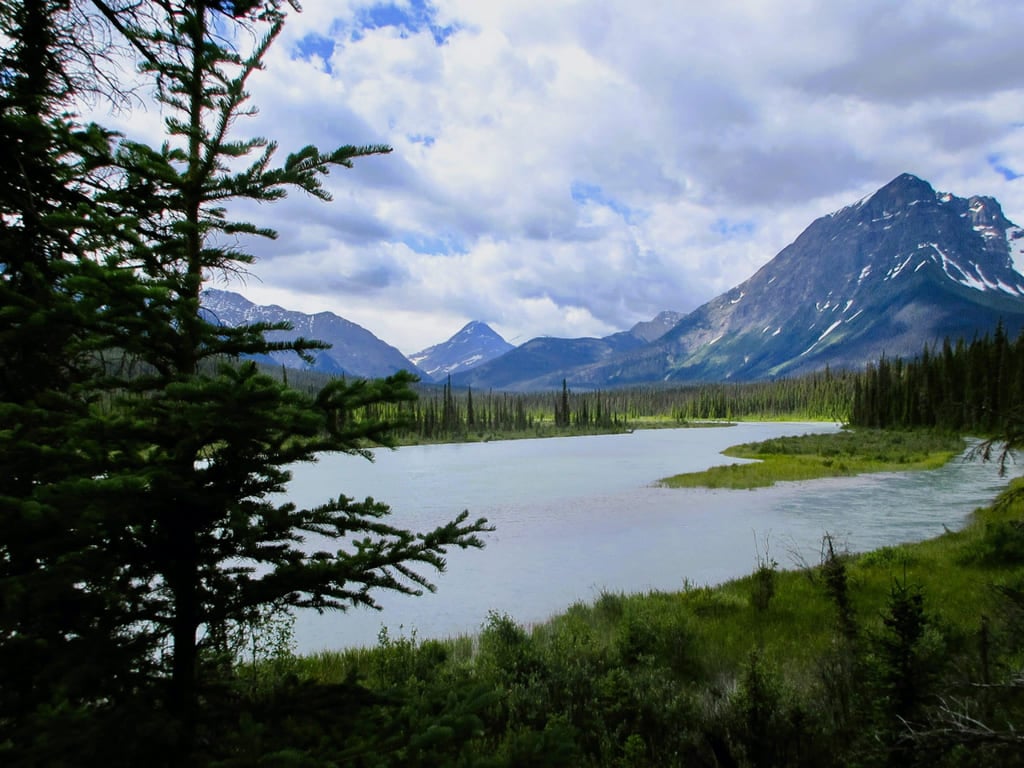
Parks Canada’s mandate includes fostering public understanding, appreciation and enjoyment of places—including those important to cultural heritage—for present and future generations. That suggests longstanding heritage trails such as the Athabasca Pass National Historic Site Trail should be accessible and maintained for current and future adventurers. Additionally, limited access on some trails can lead to overuse elsewhere.
Since 2010, Jasper National Park has prioritized backcountry travel in three specific areas: the Brazeau Loop, the Skyline Trail and the Tonquin Valley. But campsites in those areas are fully booked each spring—almost as soon as the reservation system opens. In July and August 2021, campsites in the Skyline, Tonquin and Maligne backcountry areas had 94 per cent occupancy. Arguably, maintaining trails and encouraging backcountry camping elsewhere would decrease pressure on those high profile areas.
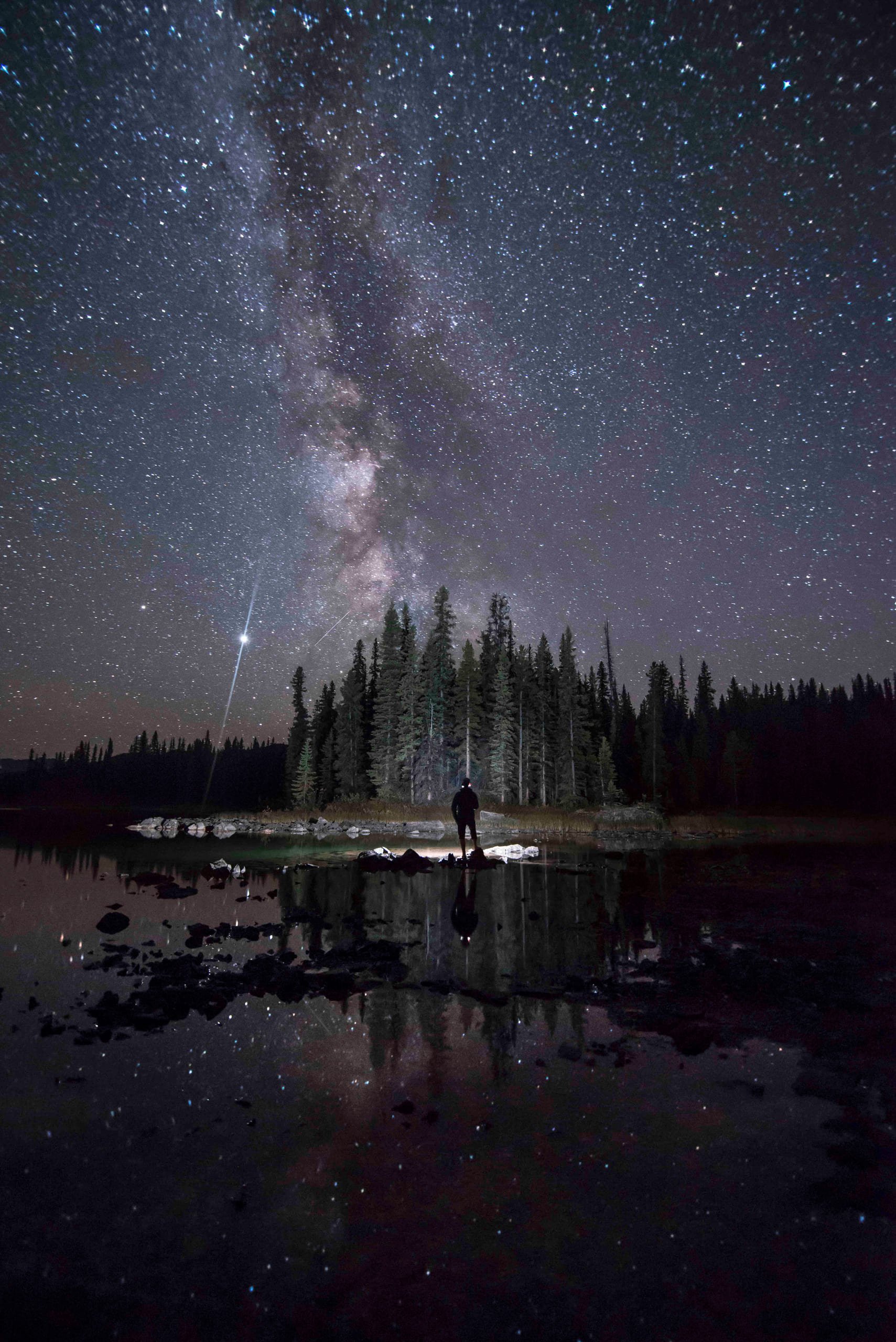
Fight or flight
After being rebuffed by raging Simon Creek, we were retracing our steps eastward when another great roar suddenly interrupted the Whirlpool Valley’s tranquility. This time it wasn’t the powerful rumbling of a freestone river in flood but the staccato whump-whump-whump of a low-flying helicopter.
In the past, Jasper National Park staff travelled the backcountry solely by horseback. They kept the trails clear and the warden cabins well-maintained. Horse-mounted public servants studied park ecology, checked visitors’ permits and dissuaded poaching. These days, during the summer, Jasper park has a herd of about 25 horses at its barn available for park staff use, but more often, Jasper National Park staff needing to get into the backcountry are ferried through the sky.
Of course, choppers are handy. They can transport supplies for trail repair and bridge construction that horses can’t carry. They facilitate emergency rescues, transport wildlife, and help experts manage wildfires and conduct avalanche control. But they’re also extremely expensive to operate. The helicopter bill for the Jasper National Park trail unit alone, from 2019 to 2021, was more than $400,000.
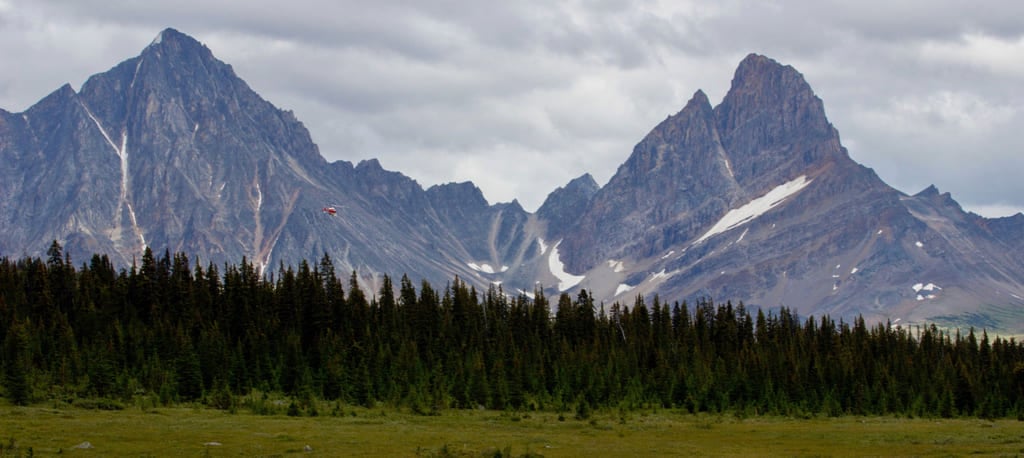
And particularly during a climate emergency, there is a case for rethinking the lost benefits of mounted patrols. Canada’s federal government has committed to net zero emissions by 2050. The average horse produces 21 kilograms of methane per year. An average-sized helicopter, on the other hand, emits 270 kilograms of carbon dioxide per hour.
Long way ‘round
Like the broken bridges and trees strewn across the trail, the mechanical bird in the sky was a reminder that bureaucracy poses a powerful threat to Canada’s backcountry heritage. As the helicopter’s roar faded, we backtracked toward the trailhead: wading four creeks, climbing over and under 10 fallen trees, passing Tie Camp and eventually popping out on the former road. We collected our bikes, slapped on our helmets and sweated back to the trailhead.
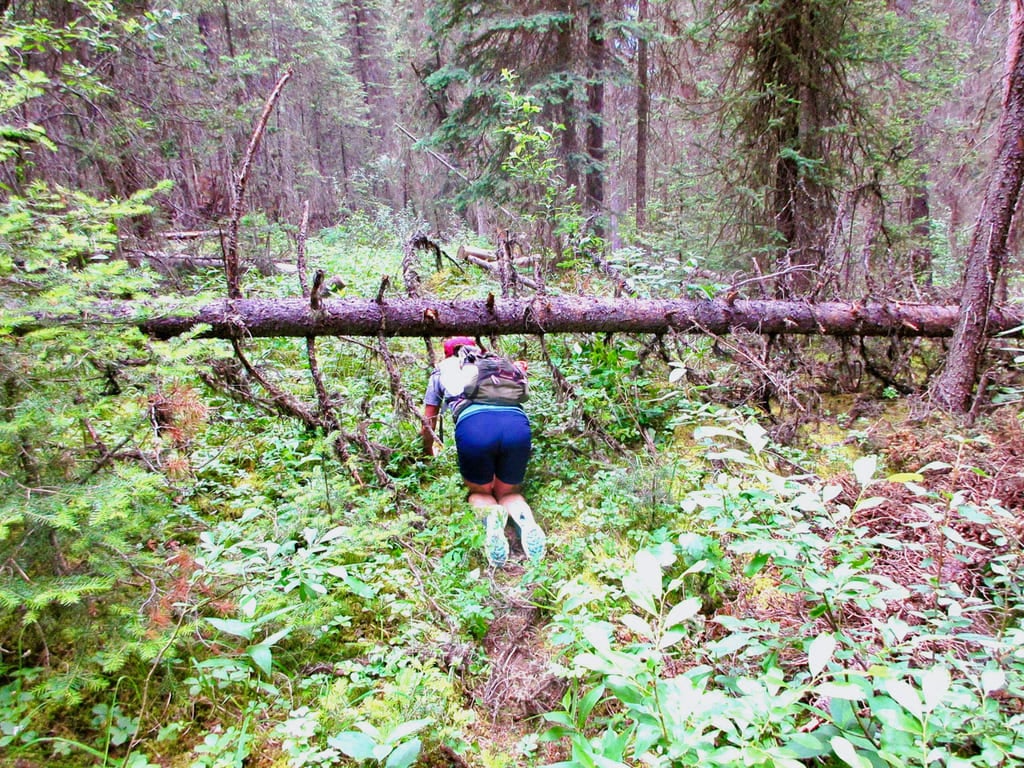
Athabasca Pass still calls to me. But if I can’t cross Simon Creek, I can’t get there through Jasper National Park. Neither can other hikers and horseback riders.
The good news is that the pass will soon be accessible from the west, through British Columbia. Last fall, the Alpine Club of Canada (ACC) cleared, restored and marked the trail on the west side of Athabasca Pass. There may also be a clearing at the end of the trail, so to speak, via Jasper National Park’s new management plan. The plans are required every decade and the 2022 vision is expansive, whereby “stories come alive through old trail and transportation corridors” and “immersive experiences in nature benefit visitors’ health and mental wellbeing, and revitalize their connection with the environment.”
While those words may not reflect what’s currently happening in Jasper’s backcountry, they could provide important new direction for the future.
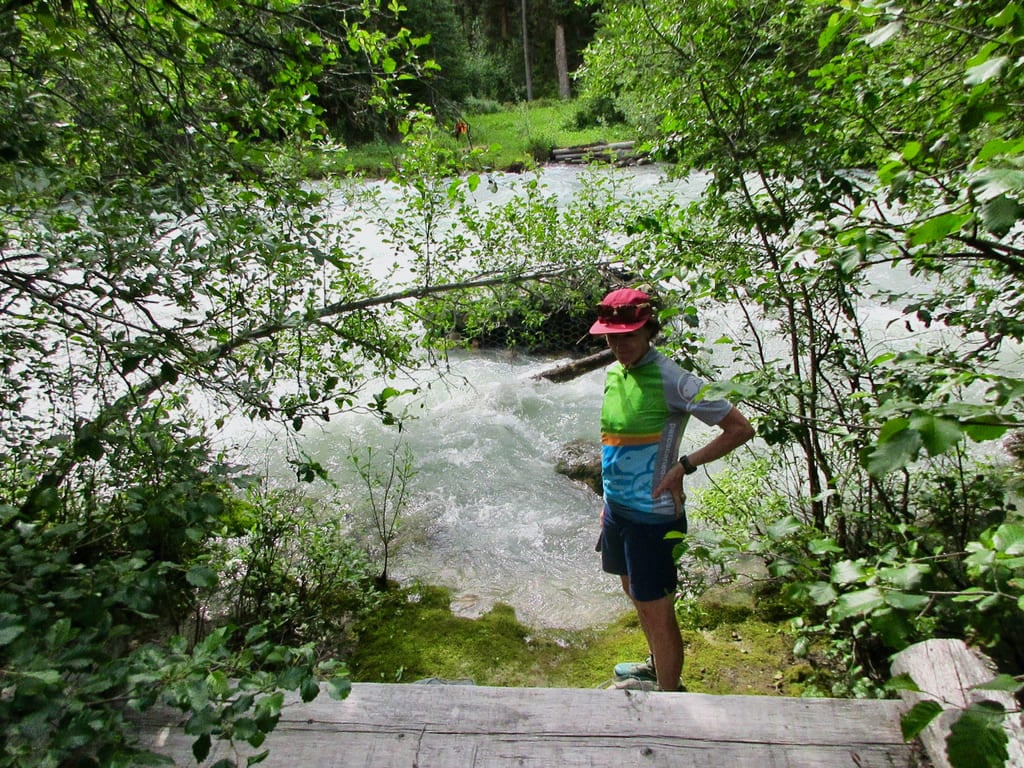
In the meantime, many backcountry users will continue to be frustrated that a federal agency, with helicopters and trail crews and engineers at its disposal—and with a mandate for managing its national parks so that visitors can understand, appreciate, and enjoy them—can’t ensure those visitors can hike to a national historic site.
What I’m focusing on, however, is that thanks to the ACC, the Athabasca Pass is accessible to the history-curious public once again, albeit from the opposite direction. It’s an achievement I hope to one day toast from the shores of the Committee’s Punchbowl.
Tania Millen // info@thejasperlocal.com


